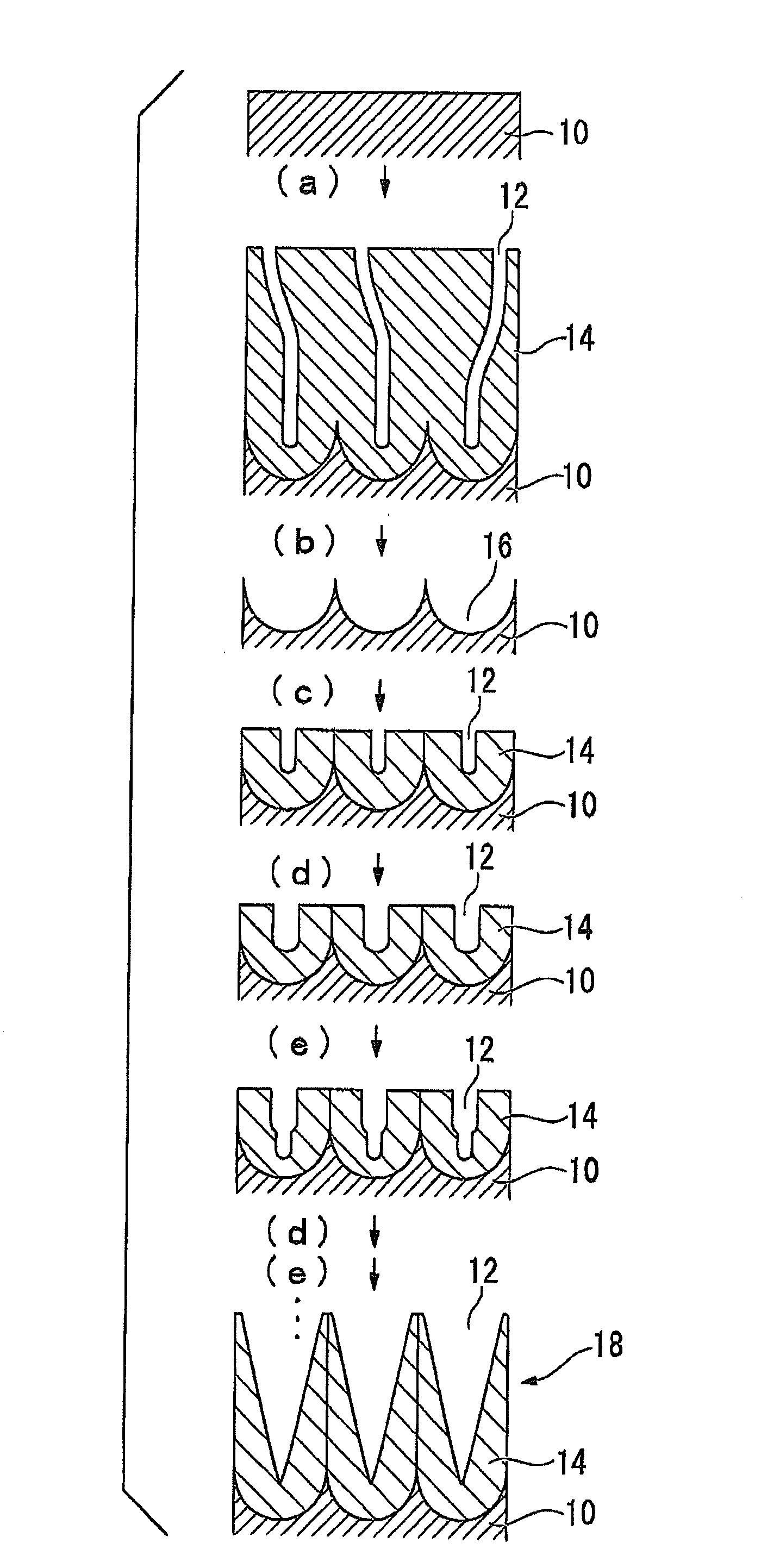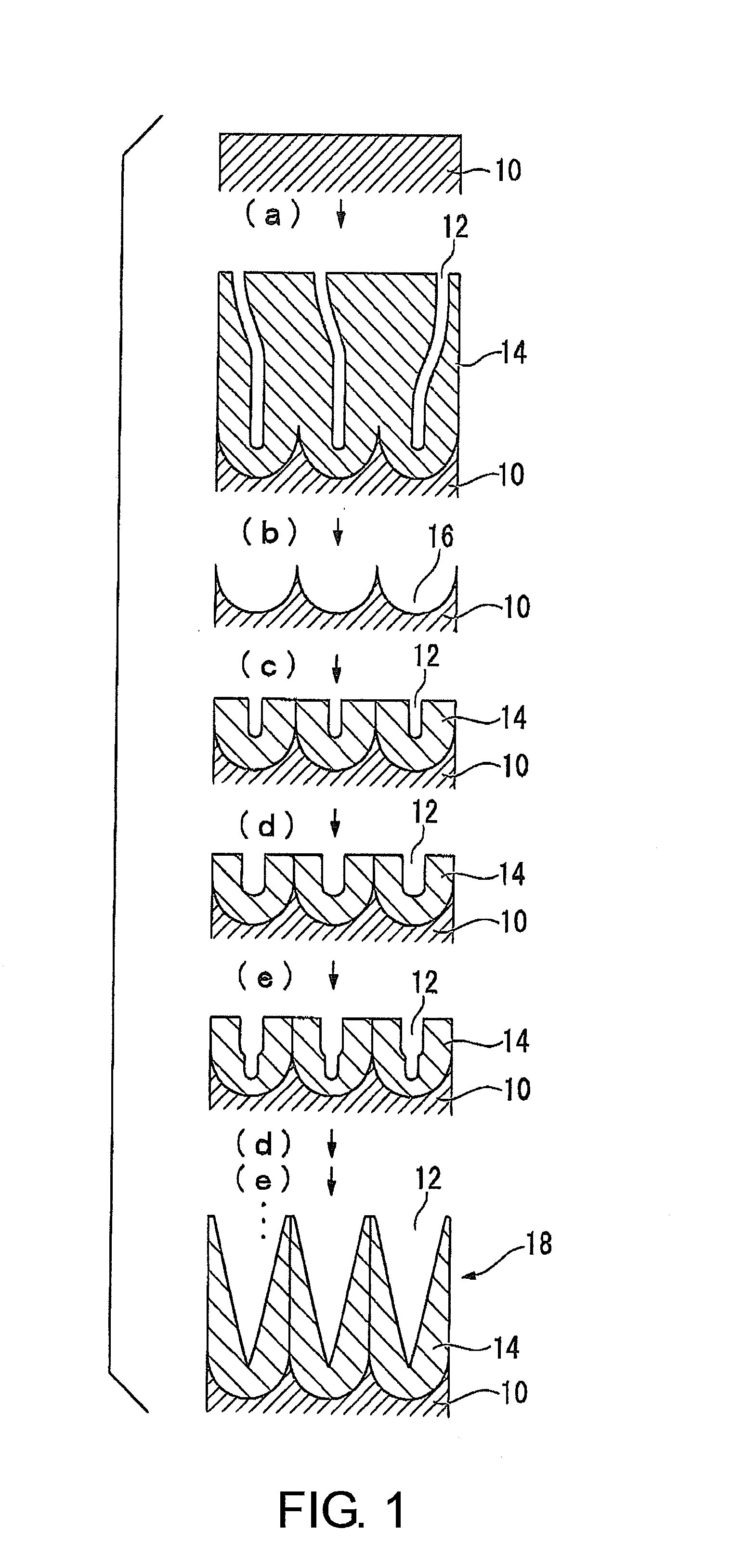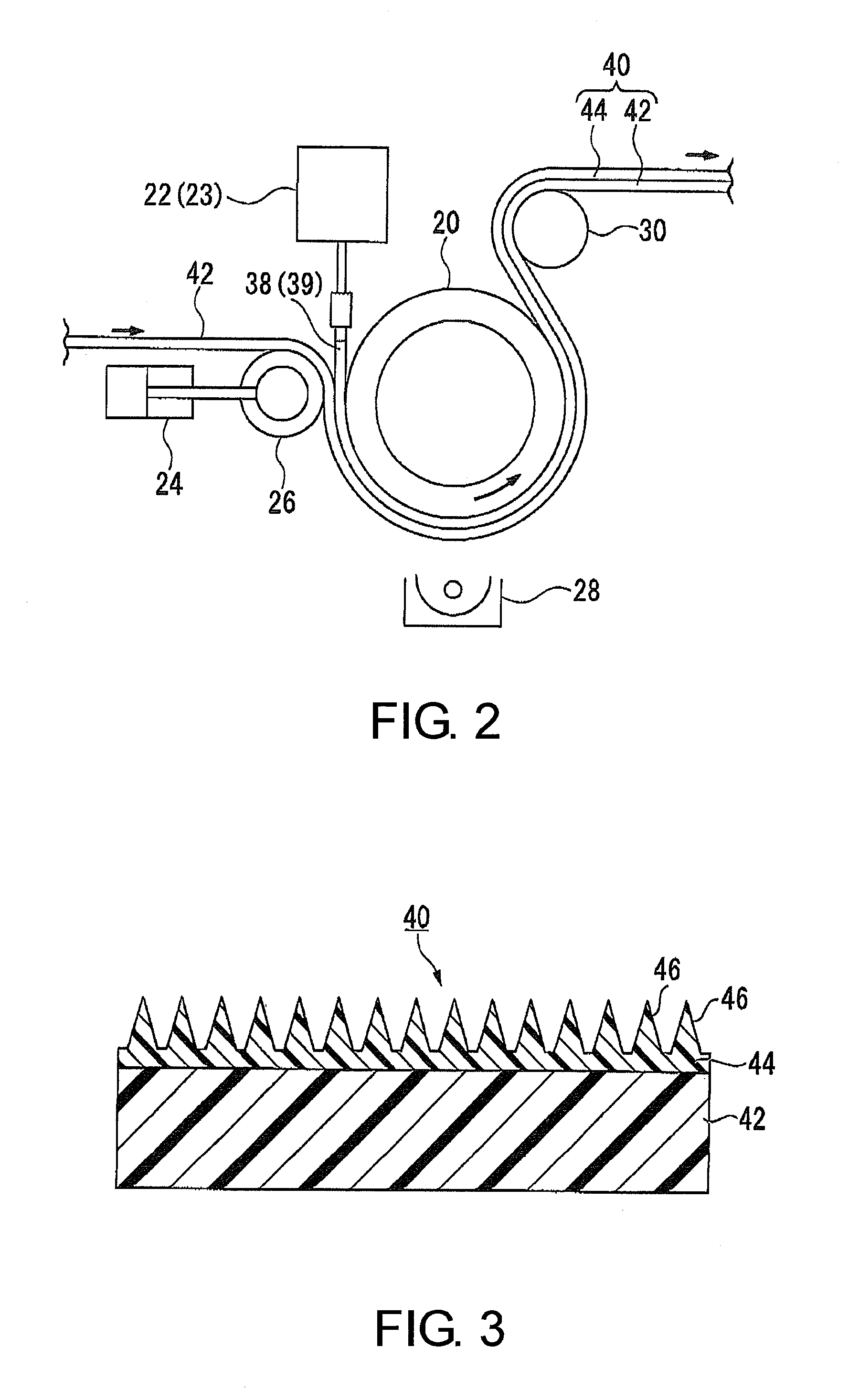Method for producing product having uneven microstructure on surface thereof, mold release treatment method, and active energy ray curable resin composition for mold surface release treatment
a technology of active energy ray curable resin and surface release treatment, which is applied in the direction of coatings, layered products, chemistry apparatus and processes, etc., can solve the problems of uneven treatment, time-consuming and complicated release treatment, and the transfer of uneven microstructure. , to achieve the effect of suppressing surface contamination, high productivity and high accuracy
- Summary
- Abstract
- Description
- Claims
- Application Information
AI Technical Summary
Benefits of technology
Problems solved by technology
Method used
Image
Examples
specific examples
[0107]From the viewpoint of simply switching the active energy ray curable resin composition in-line and using the same apparatus for performing the mold release treatment to the mold and producing products continuously, the method of producing the product having the uneven microstructure thereon of the invention preferably includes the following steps (I)-(II).
[0108](I) The active energy ray curable resin composition for the mold surface release treatment (X) is supplied between a mold having a surface with the uneven microstructure thereon and the substrate, and cured by irradiation with an active energy ray thereto, and then, the cured resin layer including the cured article of the active energy ray curable resin composition (X) together with the substrate are peeled off from the surface of the mold, thus performing the release treatment to the mold surface.
[0109](II), following step (I), the active energy ray curable resin composition for shaping (Y) that is different from the a...
production example 1
[0317]An aluminum plate of 99.99% purity was buffed and then mirror-polishing in an electrolytic solution of perchloric acid / ethanol mixture (volume ratio 1 / 4).
[0318]Step (a):
[0319]With 0.3M aqueous solution of oxalic acid and 40V DC, anodization of the aluminum plate was carried out for 30 minutes under the conditions of temperature 16° C.
[0320]Step (b):
[0321]The aluminum plate formed with the oxide film was immersed in a mixed aqueous solution of 6 mass % chromic acid / 1.8 mass % phosphoric acid for 6 hours to remove the oxide film.
[0322]Step (c):
[0323]With an aqueous solution of 0.3M oxalic acid and 40V DC, anodization of the aluminum plate was carried out for 30 seconds under the temperature condition of 16° C.
[0324]Step (d):
[0325]The aluminum plate formed with the oxide film was immersed in an aqueous solution of 5 mass % phosphoric acid for 8 minutes at 32° C., so as to perform the pore diameter-expanding treatment.
[0326]Step (e):
[0327]With an aqueous solution of 0.3M oxalic ac...
example 1
(Shaping Method in Batches)
(Preparation of the Active Energy Ray Curable Resin Composition for Mold Surface Release Treatment)
[0331]The active energy ray curable resin composition (X) including the following components was prepared:
[0332]50 parts by mass of urethane acrylate of two functional groups (manufactured by Toagosei, ARONIX M1200),
[0333]50 parts by mass of polyethylene glycol diacrylate (manufactured by Toagosei, ARONIX M260),
[0334]3.0 parts by mass of 1-hydroxycyclohexyl phenyl ketone (manufactured by Ciba Specialty Chemicals Inc., IRGACURE 184),
[0335]5.0 parts by mass of polyoxyethylene alkyl phosphate ester compound (manufactured by Axel Co., MOLD Uiz INT-1856).
[0336](Preparation of the Active Energy Ray Curable Resin Composition for Shaping)
[0337]The active energy ray curable resin composition (Y) including the following components was prepared:
[0338]parts by mass of the condensation reaction mixture of trimethylolethane / acrylic acid / succinic anhydride (manufactured by ...
PUM
| Property | Measurement | Unit |
|---|---|---|
| elastic modulus | aaaaa | aaaaa |
| elastic modulus | aaaaa | aaaaa |
| indentation elastic modulus | aaaaa | aaaaa |
Abstract
Description
Claims
Application Information
 Login to View More
Login to View More - R&D
- Intellectual Property
- Life Sciences
- Materials
- Tech Scout
- Unparalleled Data Quality
- Higher Quality Content
- 60% Fewer Hallucinations
Browse by: Latest US Patents, China's latest patents, Technical Efficacy Thesaurus, Application Domain, Technology Topic, Popular Technical Reports.
© 2025 PatSnap. All rights reserved.Legal|Privacy policy|Modern Slavery Act Transparency Statement|Sitemap|About US| Contact US: help@patsnap.com



